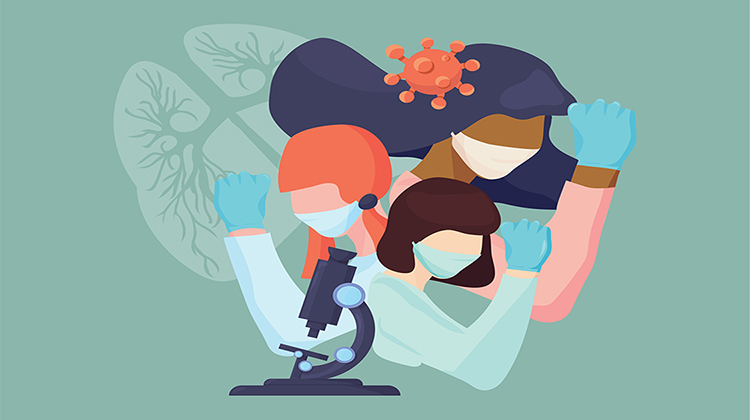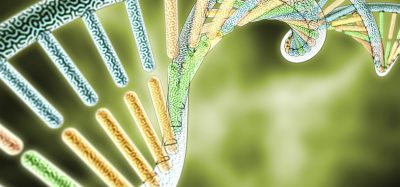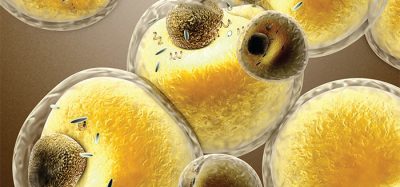Women in Stem with Theonie Anastassiadis
Posted: 29 August 2023 | Taylor Mixides (Drug Target Review) | No comments yet
Join us for our monthly Women in STEM series where we showcase and celebrate the achievements of inspiring women in the field. This month we interview Theonie Anastassiadis, Cofounder & Chief Innovation Officer of Alltrna and Senior Principal of Flagship Pioneering. As a senior principal at Flagship Pioneering, Theonie conceives, builds, and grows the science, intellectual property, and business strategy that form the foundation of Flagship’s next breakthrough start ups. As co-founder and Chief Innovation Officer of Alltrna, she oversees innovation efforts that explore novel applications of the Alltrna platform to develop new tRNA medicines.

Can you tell us about your journey in the field of STEM and the challenges you encountered along the way?
My STEM journey started with a genuine love for biology back in middle school. As I progressed through high school and then Haverford College, I got hands-on lab experience at other institutions like the NIH-NCI and the Bio21 institute in Melbourne, Australia. But one of my biggest challenges was finding that first lab to work in. I remember writing to so many labs and just getting rejected or worse getting no responses. During my college years, I explored a breadth of fields ranging from glioblastoma signalling to nano assembly using phage display, but cancer biology always fascinated me the most due to its broad patient impact. Another challenge I faced was to determine what field or subject to focus my PhD on, since so many fields interested me and even cancer biology is so broad. Once I decided to pursue cancer research, I explored subfields within it by working at Fox Chase Cancer Center for a couple years, which resulted in authoring a couple of papers.
I then chose to do my doctoral research at the Perelman School of Medicine at the University of Pennsylvania, which provided me with great scientific training, critical thinking, and communication skills. It’s also where I got exposed to career options beyond academia and learned about Flagship Pioneering, a venture creation firm that conceives, resources, and builds life science bio platform companies in health care and sustainability. I admired Flagship’s venture creation model, the people, the impact on patient health and Boston’s biotech ecosystem. Jumping into the entrepreneurship scene was a big shift from my perceived academic path however, reshaping my identity and dealing with being comfortable being uncomfortable. It’s been a journey of growth, adapting, and building something meaningful. This has so far culminated in co-founding Alltrna, the first tRNA platform company, and growing it with a talented team. I’m not sure what challenges lie ahead but I feel confident that with my skills and support network that we can take them on.
What inspired you to pursue a career in STEM, and how did you overcome any obstacles or biases you may have faced?
Since middle school I have been fascinated by biology’s elegance and once given the opportunity to work in a lab, I quickly realized how much I loved pushing back the boundaries of scientific knowledge, often being one of the first people in the world to uncover a new biological insight. I was fortunate to have some incredible mentors early in my career who not only taught me the scientific method and a breadth of technical skills but also about having grit and resilience in science. One of my mentors asked me if I was ready to fail 90 percent of the time. I overcame most obstacles I faced through curiosity, learning, hard work, and perseverance. I tried to learn from everyone I met; in every lab I worked in, I made sure to learn every technique performed in the lab; and I kept trying to find solutions to projects that did not work.
Could you share an example of a specific project or research that you have worked on and the impact it has had in your field?
While at Flagship Pioneering, I explored the concept of using a tRNA molecule as a drug. That work resulted in co-founding Alltrna, a tRNA bioplatform company that incorporates AI (Artificial intelligence) and ML (Machine learning) tools to learn the tRNA language and systematically program tRNA medicines with broad therapeutic potential. Our team has discovered novel rules and properties about tRNA molecules as well as conceived of new ways of leveraging this ancient molecule as a precision genetic medicine. The implication of this work is that we have an unprecedented opportunity to advance a single tRNA medicine to unify treatment across a wide range of diseases with the same underlying genetic mutation, enabling us to provide medicines to patients, especially those with rare or ultra-rare diseases, with no or limited treatment options.
As a woman in STEM, what unique perspectives or strengths do you believe you bring to your work?
Being people-focused, in addition to having a breadth of scientific training, are strengths that I bring to work. I think being people-focused is essential to innovation but not always common in innovative environments. To me it means: (1) being able to work well with others and as a team where everyone is encouraged to express different perspectives to enhance the final output, (2) building a culture of trust, collaboration, kindness, respect, and transparency where everyone can bring their authentic self to work and do their best work, and (3) focusing on mentoring and developing people so they feel a sense of purpose and fulfilment.
Doing rigorous science is key, but ultimately, it’s people working together that execute the science and change the world.
What advice would you give to young women who are considering a career in STEM but may be hesitant due to societal stereotypes or perceived challenges?
Do not underestimate yourself and be confident in your abilities. Find mentors and sponsors, of all backgrounds and experiences to advise you and support you in your career. Don’t limit your path by what you can see today. It wasn’t long ago that the idea of women working outside the home seemed ludicrous to some, and today we have women in space and running Fortune 500 companies. Envision your ideal path and enlist colleagues, friends, and family to help you forge that path so you can write a new possibility for yourself and future women. The people and environment you surround yourself with will enable or prevent this path so adjust accordingly. You can do it!
How do you see the representation of women in STEM changing over the years, and what further progress do you believe is needed?
We have observed a gradual, positive shift in the prevalence of women in STEM fields and an increase in the number of women at leadership positions. Efforts to promote gender equality and diversity have led to increased visibility of women and those who identify as women in various STEM disciplines. These changes coupled with the clear demonstration of success stemming from diverse leadership teams have promoted more thoughtful and inclusive approaches that reduce barriers for women to enter, stay, and thrive in the workforce.
As more women are continuing to pursue higher education and enter STEM careers, contributing their unique perspectives and skills to these fields, a virtuous cycle is created with the promise to continue seeing more women across STEM fields and at senior positions.
That said, to achieve true gender parity, we must continue dismantling systemic barriers that hinder women’s progress. Supportive policies and initiatives play a pivotal role in creating equal opportunities for women in STEM. Starting at an early age, promoting STEM education and girls’ interest in STEM, followed by encouraging mentorship and sponsorship for women, especially at early career stages, is important to help navigate challenges, access opportunities, and build strong networks. Furthermore, it is essential to support and invest in women long-term during life events that historically have fallen on women to own, such as child rearing or taking care of ill family members, that often lead to them exiting the workforce or falling behind in career progression.
Workplaces should support all genders equally as well as normalise supporting the non-gestational parent to take parental leave as well as share child-rearing and family care responsibilities.
In your opinion, what can organisations and institutions do to create a more inclusive and supportive environment for women pursuing STEM careers?
Progress has been made on raising awareness about the gender disparities and biases that exist within STEM fields through training programs and workshops to educate about unconscious biases and promoting diversity, but much work remains to be done. This is by no means a comprehensive list but some things to create a more inclusive and supportive environment are:
Inspire and de-isolate women at the top. Organizations should actively prioritise and work towards building diverse teams at all levels of the organization. It is known that people tend to network and hire close to their image. So, a non-diverse team will need to actively work towards diversity, remembering that diversity encompasses many different types of human differences and experiences in addition to gender identification. Additionally, actively supporting and promoting visible female role models in leadership positions and showcasing the success stories of women in STEM inspires and motivates the next generation.
Create policies that support women. Organisations can be thoughtful about how their policies are established and executed. For example, how job descriptions are written and how recruiting occurs can have a major impact on team diversity. The ability to work remotely or have flexible hours is especially important for those with expanded family responsibilities. Providing parental leave for everyone, so that partners can equally contribute to childcare can minimize bias against women who take leave.
Mentor and sponsor women. Mentorship and sponsorship programs make significant differences in people’s careers. Pairing women with experienced senior mentors who can provide guidance, advice, opportunities, and a supportive network can be instrumental in their career progression. Moreover, involvement of non-female mentors prevent this role from falling exclusively on senior women and is essential to ensuring a robust and supportive network is built for the mentee.
Looking ahead, what exciting developments or advancements do you foresee in your field of STEM, and how do you envision your own research contributing to those future innovations?
We are in a golden age of biotech exemplified by the impact this sector has had during the pandemic. Looking ahead, I see promising developments in the field of STEM, particularly at the intersection of biology, computing and information technology. With the rapid advancement of new technologies and methodologies, access to more human data than ever before, and the application of machine learning, I believe we are entering an era where we will make ground breaking discoveries in previously understudied and/or difficult to access fields of research study and disease. I’m also excited about the possibilities of personalised medicine and more precise therapies tailored to individual patients as well as progress in equity of access to medical treatment and diversification of patients studied.
We are in a golden age of biotech exemplified by the impact this sector has had during the pandemic. Looking ahead, I see promising developments in the field of STEM, particularly at the intersection of biology, computing and information technology.
In terms of my own contributions, I believe my research can in part play a role in driving future innovation in precision therapies. At Alltrna, we are developing tRNA medicines where one engineered tRNA medicine can precisely correct a type of mutation across thousands of genetic diseases driven by the same genetic mutation, thereby providing precision treatment to patients, agnostic to the prevalence of the disease. Because of the unique biology of tRNAs, we have an unmatched opportunity to scale genetic medicines for rare and ultra-rare diseases and give millions of patients the chance at a therapy developed in years, not lifetimes.
Author Bio:
 Theonie Anastassiadis
Theonie Anastassiadis
Theonie is the Cofounder & Chief Innovation Officer of Alltrna and Senior Principal of Flagship Pioneering. As a senior principal at Flagship Pioneering, Theonie conceives, builds, and grows the science, intellectual property, and business strategy that form the foundation of Flagship’s next breakthrough startups. As co-founder and Chief Innovation Officer of Alltrna, she oversees innovation efforts that explore novel applications of the Alltrna platform to develop new tRNA medicines.
Before joining Flagship, Theonie received her Ph.D. in cell and molecular biology with a focus in cancer biology from the Perelman School of Medicine at the University of Pennsylvania. Theonie’s work has resulted in multiple patents and publications in top-tier scientific journals. In 2022, she was named to Endpoints News’ 20 under 40 list of the next generation of biotech leaders and Boston Business Journal’ 40 under 40 list for successful professionals giving back to their community. She is a Business Advisory Board member of the Harvard Institute for RNA Medicine and a member of the Bioscience & Investor Inclusion Group (BIIG) Diverse Talent Network Group.
Author’s note: the mention of women in each instance is meant to include all those that identify as women.
Related topics
Drug Discovery, Targets
Related organisations
Alltrna, Flagship Pioneering, Perelman School of Medicine at the University of Pennsylvania
Related people
Theonie Anastassiadis (Alltrna)







